#consistency is overrated and so are accurate ears
Explore tagged Tumblr posts
Text

silly viera wol alt go brrr
#it's my birthday-week so I get to draw whatever silly thing I please#so fav wol alt it is#my fluffy viera boi milou#he's just a silly guy lol#sketchy lazy messiness galore yay#composition is literal ass but I didn't wanna make it bigger than I had to so rotating and overlapping it is wooh#consistency is overrated and so are accurate ears#also his eyebrows while still striking are not nearly as magnificent as this ingame which is a shame but ig it'd be hard to make work#in the animu style on a bunboi so fair enough#also the fluffy hair square really need to figure out how to make curly hair work like yesterday and not just the wavy stuff like pls#honestly he looks kinda just like the most basic of bunguys ingame but it's fine I know in my heart what his vibes really are#which is just a silly guy doing his best given the situation he's in with all the responsibility of world saving thrust upon him#as it is with most wol's really I'm sure ha#also he sounds like corpse bc of course he does bc vibes lmao#anyways enough ranting enjoy or don't it's whatever#I sure will and that's enough at the end of the day in this case specifically lmaooo#ffxiv viera#wol#just viera things#I draw what I want#now off to hopefully be more productive artwise this year fingers crossed yeehaw
20 notes
·
View notes
Text
Anonymous asked: I love your long posts which make for great reading and I wish you could do more because you’ve got such a range of astonishing interests. I’m hoping because you’ve served in the military you would have studied military thinkers. Do you think the Art of War by Sun Tzu is way overrated by everyone? I studied him a bit for my masters but I still couldn’t get my head around him. Interested to know your thoughts. Thanks!
“To lift an autumn hair is no sign of great strength; to see the sun and moon is no sign of sharp sight; to hear the noise of thunder is no sign of a quick ear." - Sun Tzu's Art of War, Chapter IV - Tactical Disposition, Clause 10.
Sounds cool, doesn’t it?
But what the hell does this quote really mean? Do you know what it means? Can anyone else tell me?
Look, I enjoy a good Sun Tzu quote as the next person. Only recently I was exchanging thoughts with a fellow blogger whose studying Thucydides, Clausewitz, and Kissinger for an advanced course at the US Naval War College. Even he prefers Sun Tzu over Clausewitz. I can see why too. If you can make sense of chapter one of Clausewitz’s tome On War you deserve a Nobel Prize.
Unlike my very learned fellow blogger, there are lot of folk who don’t know Sun Tzu at all. They can quote him, but almost certainly out of context. As someone who partly grew up in the Far East and even learned Chinese and Japanese (a pitiful but functional degree of fluency) I’m embarrassed (not hard since I’m English) when I hear other Western compatriots romanticise and elevate Eastern icons to mythic status that the Chinese themselves have never done.
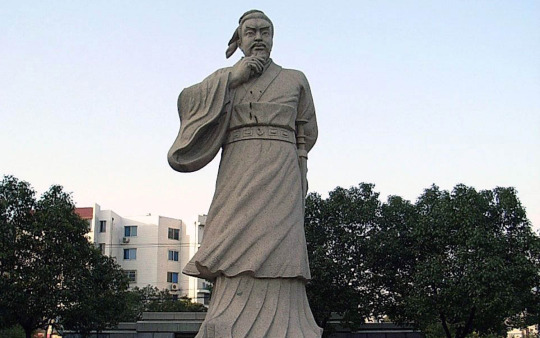
I am even more bemused than embarrassed after having hung up my military uniform for ‘civvy’ corporate clothing at how badly abused Sun Tzu’s book is in the corporate world. In my workplace I grit my teeth at corporate high flyers who mistake a balance sheet for a real battlefield by quoting Sun Tzu out of their arse, and then as self-styled ‘corporate warriors’ work themselves up in a lather of testosterone induced self-importance to crush their corporate enemies into the dust.
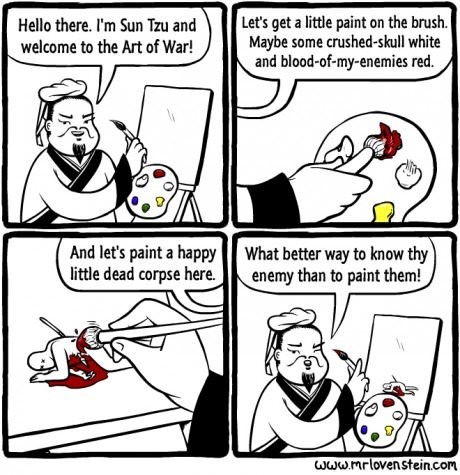
This is why the The Art of War by Sun Tzu has invited a jaundiced eye roll. And rightly so. I can see why many view Sun Tzu as over-rated because many easily impressed people go all woo woo over anything ancient and Eastern.
It’s become a familiar trope to say the art of ‘strategy’ as a science began 2,500 years ago with the writing of The Art of War. I would dispute this. Not that the writing of Art of War was the earliest written but whether I would call it a manual of strategy per se - more on this below in my answer. However you rate or overrate the Art of War it’s important to have perspective and remember this book is written in 512 BC. Other than the bible and some religious books, there are not many books that can survived thousands of years and still remains a steady bestseller and enjoys a wide influence in military academies and army staff colleges today and even as far into board rooms.
The question behind your question is just as interesting to me: why did Sun Tzu and his Art of War gain such traction in the West?
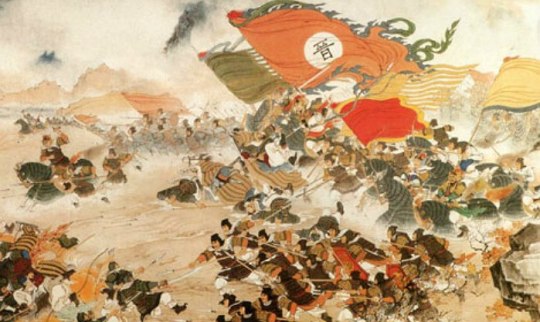
Sun Tzu (544-496 BC) wrote the original text of The Art of War shortly before 510 BC. During most of the past two thousand years, the common people in China were forbidden to read Sun Tzu's text. However, the text was preserved by China's nobility for over 2,500 years. The Chinese nobility preserved the text of The Art of War, known in Chinese as Bing-fa, even despite the famous book-burning by the first Emperor of Chi around 200 BC. The text was treasured and passed down by the Empire’s various rulers. Unfortunately, it was preserved in a variety of forms. A "complete" Chinese language version of the text wasn't available until the 1970s. Before that, there were a number of conflicting, fragmentary versions in different parts of China, passed down through 125 generations of duplication.
Indeed at the beginning of the twentieth century, there were two main textual traditions in circulation, known as the (Complete Specialist Focus) and (Military Bible) versions. There were also perhaps a dozen minor versions and both derived and unrelated works also entitled Bing-fa. Of course, every group considered (and still considers) its version the only accurate one.
When I last visited China before the Covid pandemic for work reason, I had time off to go to a couple of museums that housed the fruits of a number of archeological digs uncovering the tombs of the ancient rulers of China in which sections of Sun Tzu’s works were found. These finds have verified the historical existence of the text and the historical accuracy of various sections. I understand new finds are still being made.

The first complete, consistent Chinese version was created in Taipei in the 1970s. It was titled The Complete Version of Sun Tzu’s Art of War." It was created by the National Defence Research Investigation Office, which was a branch of Taiwan's defence department. This version compared the main textual traditions to each other and to archeological finds and compiled the most complete version possible.
This work was completed in Taiwan rather than mainland China for a number of reasons. Mainland China was still in the throws of the Maoist Cultural Revolution, which actively suppressed the study of traditional works such as Sun Tzu. The mainland had also moved to a reformed character set, while Taiwan still used the traditional character set in which the text was written. Only today is the study of Sun Tzu in mainland China growing, interestingly enough, through the translation of Sun Tzu into contemporary Mandarin. Based on the archeological sources we have today, we are reasonably certain of the historical accuracy of this compiled version that is the basis of what most people use today.
Surprisingly, the Art of War only came to light in the West around the 18th Century.
Historians believe it was first formally introduced in Europe in 1772 by the French Jesuit Joseph-Marie Amiot. It was translated at the time by the title “The thirteen articles of Sun-Tse”. Joseph-Marie Amiot (1718-1793) was not just a Jesuit priest but also an astronomer and French historian, as well as fervent missionary in China. He was one of the last survivors of the Jesuit Mission in China (he died in Beijing).

Many of the historical problems with understanding Sun Tzu's work can be trace back to its first Western translation in French. A Jesuit missionary, Father Amiot, first brought The Art of War to the West, translating it into French in 1782. Unfortunately, this translation started the tradition of mistranslating Sun Tzu's work, starting with the title, The Art of War (Art de la guerre).
This title, copied the title of a popular work by Machiavelli (a criminally underrated writer on military strategy), but it didn't reflect Sun Tzu's Bing-fa, which would be better translated as "competitive methods."
We cannot say what effect being translated by a Jesuit priest had upon the text. It was unavoidable that the work's translation reflected the military prejudices of the time era when war was both popular and Christian. It was also unavoidable that most future translations would reflect some of the first translation's prejudices. However, war was on the verge of becoming much less Christian in the West since this time was the era of the French Revolution (1789).
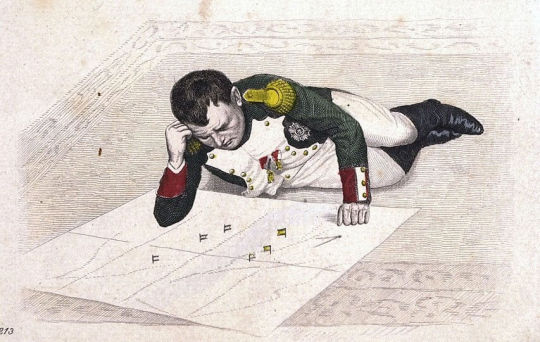
The work might well of slipped into obscurity after its initial publication, but it was discovered by a minor French military officer. After studying it, this officer rose to the head of the revolutionary French army in a surprising series of victories. The legend is that Napoleon used the work as the key to his victories in conquering all of Europe. It is said that he carried the little work with him everywhere but kept its contents secret (which would be very much in keeping with Sun Tzu's theories).
However, Napoleon must have started believing his own reviews instead of sticking with his study of Sun Tzu. His defeat at Waterloo was clearly a case of fighting on a battleground that the enemy, Wellington, knew best. Wellington’s trick at Waterloo was hiding his forces by having them lie down in the slight hollows of this hilly land. This is exactly the type of tactic Sun Tzu warns against in his discussion of terrain tactics.
After Napolean, Sun Tzu's theories made their way into western military philosophy. Many of his ideas are reflected in the ideas of work of Carl von Clausewitz. who defined military strategy as "the employment of battles to gain the end of war."
The first English translation of The Art of War is less than a hundred years old. Captain E. F. Calthrop published the first English translation in 1905. Lionel Giles, an assistant curator at the British Museum and a well-known sinologist and translator, attacked this early translation, and he published his own version in 1910. It soon began to be read alongside Clausewitz’s 8 volumes of turgid German military prose.

It wasn’t long before military thinkers were ditching Clausewitz for Sun Tzu because no one could get past Chapter One of Clausewitz’s On War. The “Clausewitz is dead, long live Sun Tzu” school was first championed by the influential British military theorist B.H. Liddell Hart in the 1920s. Basil Henry Liddell Hart (1895-1970) was a captain in the British Army. He was a very influential military theorist and historian, and author of several books such as The Future of War (1925) and Strategy (1954). Having witnessed first-hand the mechanised onslaught of the Great War, Liddell Hart sought a philosophy of warfare based in the prudent use of technology, psychology and deception - and the avoidance of the 'total war' catastrophes of preceding decades.
The main idea of Liddell Hart is to bring the set of principles of warfare in a so-called ‘indirect approach’ to the enemy. His advocacy in his scholarly work of an ‘indirect strategy’ over direct, frontal operations, was a reaction to the high casualties of the Western Front in the First World War. But his ideas were not simply about physically outmanoeuvring an opponent. Instead he pushed for a psychological scheme: to strike from unexpected directions, to generate strategic dissonance, and to induce paralysis. Hart’s well-known thoughts are “Only short-sighted soldiers underestimate the importance of psychological factors in time of war”, “Originality is the most important from all military virtues”, and “The principles of war could shortly be condensed in a single word: concentration”.
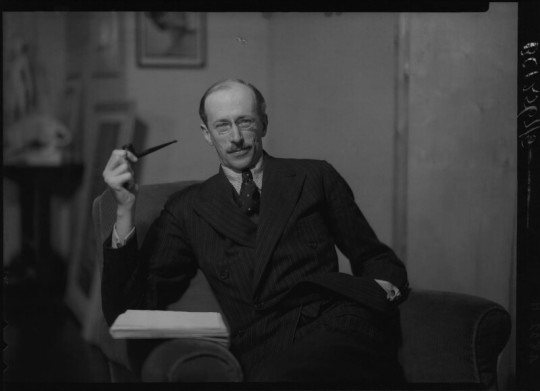
Liddell Hart believed that distilling historical insights of strategy and operations would offer the chance to avoid the costly disasters of modern war and ensure a more cost-effective route to success. He imagined technological solutions in the form of air power and mechanised land forces outflanking and shocking an enemy at the tactical level. This would be complemented by taking indirect strategic ‘ways’. Like his contemporary J.F.C. Fuller, Liddell Hart considered concentrations of air and armoured forces driving deep into enemy territory to destroy their ‘nervous system’. The psychological aspects of this were central, since acquiring an advantage demanded moves that were unexpected, with precise attacks at the most vulnerable points. As the most influential military writer of the modern age, revered and reviled by three generations of strategists, armchair and armipotent, his controversial theories of armed attack laid the foundation of the famed German Blitzkrieg.
Hart’s championing of Sun Tzu’s work as articulated through his own works got a new lease of life as the world gingerly settled into the ice bath of the Cold War. The rise of Communist China, against all the odds having defeated the well disciplined nationalist armies of Chian kai-Shek, was a wake up call for the West. There was a general befuddlement among western military analysts to explain the secret of Maoist success. There was an intellectual inquest in the 1950s and 1960s for some way to explain (and, it was hoped, learn to counter) Maoist military doctrine. Sun Tzu was seen as one of the historical and cultural sources of some particularly Chinese or Asian way of war, and his work made its way into Western discussions of counterinsurgency and asymmetric warfare.

Into the breach - and with fortuitous timing - appeared a new translation of The Art of War that was to become the defining translation right down to our day. Liddel Hart provided the foreword to Samuel Griffth’s 1963 translated copy of the Art of War. It was to quickly become a key text in US war colleges and this version is still to this day favoured by most of these institutions. We also studied Griffith’s translation at Sandhurst alongside Liddell Hart’s ideas.
There is no question that Griffith’s translation has become the standard go to translation to this day in military circles - that is until James Clavell’s more populist and looser translation came along in the 1980s. One can see why. Griffith’s translation provided a number of historical Chinese commentaries on the text. It should also be noted that Griffith’s strengths was his immense experience in the military and knowledge of military history as a brigadier general in the U.S. Marine Corps.
However, this was also his version's greatest flaw. Like many other critics I have the impression that Griffith did not really believe or understand all of Sun Tzu. Indeed he would often explain away Sun Tzu's direct statements without making it clear that this was his commentary and not what Sun Tzu wrote. The other main criticism and this one is stylistic and therefore just my opinion, Griffith was also not much of a writer. By our standards today, much of Griffith’s language can seem awkward and dated.
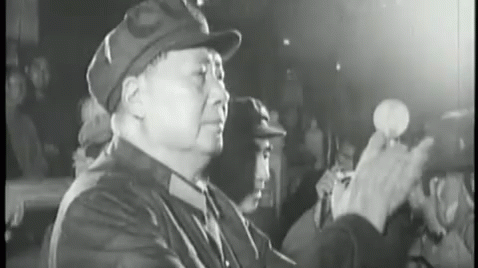
Looking back it feels ironic of the US military were wrapping their heads around Sun Tzu as way to get inside the Chinese communist mind (of Mao the military strategist especially). Unknown to them Mao had desperately tried everything to get hold of a copy of the Art of War from the Chinese Nationalists. Cambridge historian and doyenne of intelligence history, Christopher Andrew in his book The Secret World: A History of Intelligence, wrote that the theory that Sun Tzu’s The Art of War was critical to mastering contemporary warfare is propagated through the use of a tantalising anecdote: “During the civil war between Communists and the Kuomintang regime [Mao Zedong] sent aides into enemy territory to find a copy of it.” The ancient text, ostensibly, was of such vital importance that Mao was willing to risk men’s lives to obtain it, while Chiang Kai-shek vowed to protect it all costs. It’s a questionable anecdote at best as there are no historical evidence of it.
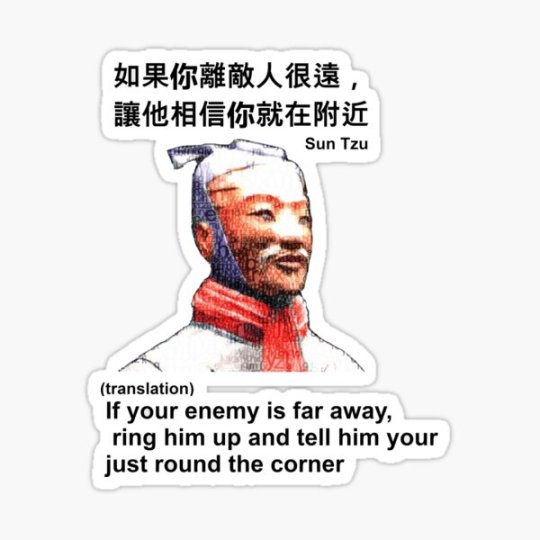
We can say that the notion that Sun Tzu’s slim treatise is considered both potent and slightly dangerous - providing the master key to unlocking victory in war through the ages - is a compelling myth that refuses to die. Mao most likely never ordered a clandestine operation to pilfer the text, nor did Chiang Kai-shek give any thought to shielding its contents from prying eyes. Both men certainly read it long before the start of their civil war, both most likely had ready access to it during the conflict, and neither man won or lost based on adherence or divergence from its teachings. But undoubtedly it set the hearts of Western military theorists aflutter in trying to unlock the secrets of Eastern military thought.
Sun Tzu and his ideas in a reincarnated form took hold of the wider public imagination in the 1980s. The 1980s was synonymous with Japan. With the perceived rise of Japan as a global economic power and the changes in post-Mao China, there was a Western (meaning American) search for more explanations. What was the secret of Asia’s rise? How were Japan and China ‘doing’ this?
In Western business circles it was for a time trendy to read it because of the perception that it was part of what made Japanese businesses so successful during the 70s and 80s. Management gurus and other corporate consultants certainly latched on to it and touted it as a way for Western businesses to re-orient their entire management and business philosophy. I don’t know if that ever actually was the case in Japan - my father who worked in both China and Japan in the corporate world at a very senior level said it wasn’t - but what is true is that in the West as the Japanese economy languished into the lost decade of the 90s so too did interest in Japanese business practices, and thus Sun Tzu.

The idea that The Art of War was a kind of how-to guide to ‘strategy’ was made especially popular by Hollywood in the 1980s. Oliver Stone’s iconic film ‘Wall Street’ seemed to typify the ‘greed is good’ New York capitalist scene of the 80s and 90s. Hollywood mirror imaged the rise of the corporate raiders and junk bond kings like Ivan Boesky and Michael Milken. Hollywood sent thousands of American businessmen off to read Sun Tzu to look for ‘leadership secrets’. This is part of a general Western fascination with ‘timeless Asian wisdom’, the American idea that ‘the mysterious East’ is possessed of secret knowledge. American and European businessmen were enamoured of the idea that “a battle is won or lost before it ever begins”, a saying that reinforced traditional American business attitudes about a winning mentality and a ‘can-do’ spirit being two keys to success.
Because Japan and China were trendy in the 1980s and 1990s it also influenced Western popular culture, not just fashion (think Kenzo) but also comic books (manga) and anime. In this Eastern friendly climate it led a number of popular fiction authors to release their ‘own’ versions of the work to capitalise on its newfound popularity. These versions were more about the pop culture of the era than Sun Tzu. Unfortunately, though popular, none of these versions took advantage of the work completed in Taiwan creating a definitive version of Sun Tzu's text by this time. These versions were based either on old English translations (the Calthorp and Giles versions) or incomplete Chinese sources. However, all of these versions remain popular today, despite their questionable sources and poor quality of translation.

In 1983, James Clavell updated The Art of War translation of Lionel Giles and published it in a very popular version. This started a very common practice in English translation: creating a ‘new’ version from other English translations instead of going back to the original source. Authors today continue to follow this practice, which only perpetuates and exaggerates the problems with early translations.
Thomas Cleary, another well-known author, did his own The Art of War translation with historical commentary in 1988. Again, his name recognition did much to increase awareness of Sun Tzu, even if his work did nothing to improve the general quality of the translation.
Looking back the whole Sun Tzu as a business model fetish in the 1980-90s was really pretty silly, rather like 80s shoulder pads. Of course, there are some similarities in leadership regardless of profession, but the basic goals and working environments of war and of business are so wildly different that applying Sun Tzu to business is superficial at best.
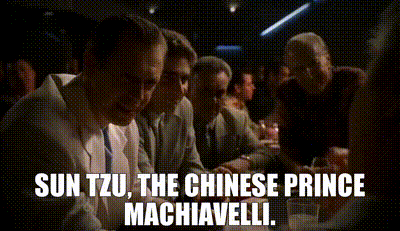
So to me the problem is not that Sun Tzu is ‘overrated’ per se, the problem is that every half baked author out there try to apply its principles to every problems that mankind have. The Art of War, as the title suggest, is not The Art of Managing your Business, the Art of Winning in Competition against your classmates, The Art of picking up Women, The Art of Living Life to the fullest. It is, and only is, The Art of War. It is ‘overrated’ only if you expect it to answer every problems in your life.
The Art of War is not the word of God. It is a war manual advocating common sense with pithy aphorisms - and a very good one.
It’s not that I think the Art of War is over-rated it’s that the more common problem is that many people vastly under-rate Sun Tzu. By misreading Sun Tzu thoughts and ideas, I believe many are in effect under-rating the problems which Sun Tzu is addressing, namely war, or the continuum of conflict resolution where divergence in interests of multiple parties extends to the possible use of lethal force on a massive scale. A lot of people trivialise this problem with idiocies like “what if someone threw a war and nobody came” (clue, they would win, then hunt down and enslave or kill everyone too foolish to contest the issue, as has happened countless times in human history) or “ban war” (said ban apparently enforced by throwing flowers at soldiers).
Understanding that war is a very real and intractable problem is necessary to fully appreciate the genius of Sun Tzu’s work, especially where it avoids fixed and easily definable tactics specific to the Warring States period and instead illustrates timeless concepts of out-thinking the enemy at every level of conflict. That the text is still mostly readily applicable or at least reasonably insightful after thousands of years is a testament to the inability of humans to push warfare beyond the fundamental aspects of conflicting interests and continuum of forcible resolution Sun Tzu addresses.

Still, the particular translation matters far less than having an appreciation that, in war, you have an active opponent who is trying to out-think and counter any moves you make, and having an appreciation of non-dualistic philosophical reasoning more characteristic of Chinese classics generally. The classic symbol of Yin-Yang (and a number of derivative versions) illustrates apparent dualism as being a part of a deeper structural unity which does not permit a fixed division into separate parts.
Hence the difficulty of applying the principles of the Art of War to artificial ideas of “winning/losing” (or war/peace, right/wrong, us/them) as categorical absolutes rather than negotiated possibilities in a continuum of desirability/costs. And it is very difficult, no one should sugar coat that. Humans sort and construct their perceptions of reality by appeal to such gross simplifications. Binary logic is an immensely powerful tool in many areas because it leverages the ability to simplify complexity and then build valid inferences based on fixed premises. But at some point you have to go beyond that to have a more fluid response to reality as it is. Which Sun Tzu does for the reality of war.
I would recommend anyone to read it. At the end of the day it’s a book of highly general aphorisms that effectively synopsise the essential insights that apply to all kinds of human conflicts. Turning an enemy's flank has the exact same effect in 2500 B.C. and in 2000 C.E. and it has the same effect in the boardroom, or public market as it does on the battlefield. Deception and intelligence are still used in exactly the same way, whether conquering foreign lands, or stealing market share from a competitor. It's a book about common sense; but common sense must seem profound to those who have none.
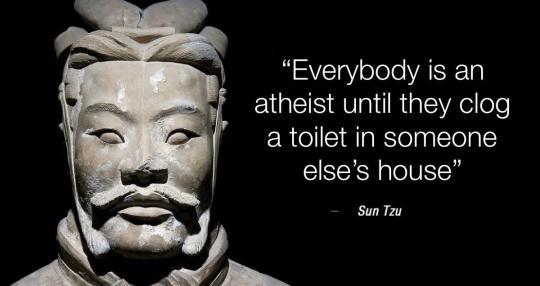
Overall, I think Sun Tzu’s Art of War is a worthy read and not overrated because in our society of over educated achievers, common sense is in as short of supply as it has ever been; if this book can provide the meaningful framework for educating very bright people in down to earth common sense, that can only be a good thing.
The value of the book then is to drive home the fact that, in human conflict, there really is Nothing New Under the Sun (Tzu).
Pardon the pun and thanks for your question.
#question#ask#sun tzu#military history#book#philosophy#china#culture#the art of war#war#military#warfare#strategy#society#literature#america#britain#japan
567 notes
·
View notes
Photo

obviously (jongin) word count: 1746 w. genre: romance, fluff, slight!angst, valentines day!au summary: even though it breaks your heart, you help jongin fill up the gift box for his valentine.
valentines day special ; pick your date minseok | junmyeon | yixing baekhyun | jongdae | chanyeol kyungsoo | jongin | sehun
The heartache started when you opened the door to a wide-awake Jongin asking you for a big favor.
“I know it’s too early for this but can you come with me to the mall? I really need to put a gift box for my Valentine.” You can see how Jongin acts antsy, his voice sounded distressed.
You can hear your heart crumbling to little pieces but you showed a smile full of glee instead. “But isn’t it Valentines Day today?”
“Yes, it is.”
You scratched your head, confused. “Then why don’t you just take her out on a date later?”
“Because,” Jongin whined as he stomped his feet like a kid he was. “She’s taking the evening shift and it ends by midnight. Most of the restaurants are closed by that time. So, I’m giving her a gift box instead.”
“And what does that gift box consist?” You raised your brow completely puzzled on why it had to be you he had to drag along.
He shrugged in response. “I don’t know! I’m asking you to come with me cause I’m a guy. I’m clueless about what girls want to get on Valentines Day. Now, come on, we’re wasting time.”
Jongin grabbed your hand but you loosened from his grip. You planned to just stay at home the whole day. Not spend it with the guy you like and buy gifts for another girl, who’s clearly not you by the description of it. “No, Jongin. Me and the girl have different preferences. This won’t work.”
“It will. You’re the closest thing I have to buying the perfect gift. Please go with me,” And being the Jongin you knew for the past three years you’ve spent in this college, he pouted and naturally, you melted in your spot.
That is why you’re strolling around the mall, searching high and low for the perfect gift for Jongin’s Valentine. If you look at the bright side, you’re gonna spend the entire day with Jongin by your side. The bad part was the time you would spend with him would equal to the happiness another girl would receive in the evening.
“So, what type of flowers should I give her? Or any specific brand of chocolates you’d recommend?” Jongin questioned, poking each food on the shelf. You two were at the supermarket looking for, well, chocolates and maybe gummy bears, as Jongin requested.
“I honestly think chocolates are overrated. I prefer gummy bears. But since you specifically want chocolates then I recommend Milka. The one with the oreo filling inside.”
You were rambling on and on about what flowers to choose and what other things to put inside the gift box but Jongin seemed to be preoccupied with his phone, typing away. His attention was completely split in half because he would reply with a ‘yes’ or 'no’ or sometimes hum in response. At the same time, he’d continue texting whoever it was he was texting.
Irritated, you stopped your tracks, “Jongin are you listening to me?”
“Huh?” He looked up. “Yeah.”
“Then what did I just say?”
With confidence covering his voice, he said, “You think white roses are the most romantic flowers to give to a girl. You prefer gummy bears over chocolates. You’d like to wear a backless dress but your mom wouldn’t let you. And you hate it when someone serenades you.”
Your mouth was agape when he remembered every detail you said. Jongin did listen to you the entire time. Amazing how he could multi-task so easily. He continued, “Did I miss something?”
“No. You were spot on to be honest.”
Jongin flashed you a soft smile that you could almost hear your heartbeat reverberating in your ear. “Really? Good.”
The rest of the day went on smoothly. Both of you went to a boutique to buy the last addition to the gift box. A dress. According to Jongin, you were the same size as his Valentine. What caught you off guard was that he revealed to you who his Valentine really was.
“Soojung?” Your voice quivered upon the name. The rumors were true. They were really dating. “Soojung’s much more petite compared to me. You’re probably mistaken.”
“No. I’ve seen everything. And judging from it, I think you two are the same size,” Jongin calmly stated as his eyes raked your entire figure. Your mind tried to process his words but it only converted to poison that shot through your heart. He’s seen everything. He’s seen everything of Soojung.
“Now would you please, please, pleaaase pick a dress out for Soojung. For me?” He practically pleaded and it was hard for your part to say no. Dumbfounded, you automatically nodded.
Jongin waited outside the dressing room while you changed into a sleek black dress. Backless, of course, since it wasn’t you who’d be wearing it for future dates with Jongin.
You closed your eyes and tried to make the most of it. You imagined Jongin right in front of you in a nice tux, enjoying your candle-lit dinner in some fancy restaurant down the street. You tried to make the most out of your imagination but when your eyes fluttered open, you were nothing more but a mannequin of what has yet to be.
Nothing more than a second option.
Insecurities started piling up inside your mind. Taking a good hard look at the mirror in front of you, you were convinced that Soojung would look much better in the dress you were wearing. She’s definitely much classier and much more beautiful than you. She was better than you in so many ways.
You snapped out of your daze when you heard a knock. “Are you alright? Are you done in there?”
“I’ll be out in a sec,” You let out a heavy sigh as you gazed at your reflection once more. Always the second best.
Jongin held his breath the moment you walked out of the dressing room. He hasn’t seen anyone who personified elegance accurately just like you did. At that moment, he just wanted to snake his hands around your waist, lock your arms around his neck and dance the night away under the moonlit sky.
He imagined you shying away from how intense his deep brown orbs were piercing right through you and that you would lean your head on his neck as a slow song played in the background. Jongin would take time to whisper all the sweet things he could possibly think at the moment. He would take all the time in the world to whisper to your ear how beautiful you were in that dress. Screw that. Jongin would tell you how beautiful you are the entire time he knew you.
But, it was too late. Jongin had Soojung. You? You had no one and that squeezed Jongin’s heart painfully.
Jongin didn’t say anything and the silence was killing you inside. Was it the dress that horrible on you? You averted your gaze to the floor in embarrassment.
Come night time, you found yourself willingly dragged by Jongin to the restaurant Soojung was working her shift in. The gift box was wrapped in a pink box and a matching red ribbon.
You and Jongin sat down when he grabbed the gift box hurriedly. “Wait there. I’ll look for Soojung at the staff room then we can go.”
“Oh,” Jongin halted then pulled out the black dress he bought. “I just remembered Soojung doesn’t wear backless dresses. You can have it. Think of it as my Valentines gift for you.”
Begrudgingly, you accepted his offer. At least you had something to hold on to even if it wasn’t originally meant for you.
Jongin scanned his surroundings. You followed his sight. “You might want to change into that dress so you can blend in the surroundings. The manager might call on you for not ordering. We wouldn’t want any trouble, right?”
“I’ll be right back.”
You followed Jongin’s request. True to his words, Jongin came back with Soojung trudging behind him. But Soojung wasn’t dolled up, it was Jongin. He wore a nice tuxedo and a matching black bow to complement his attire. On his hand, he carried a big box neatly wrapped. Bigger than the one the two of you bought.
“Wait,” you said, shocked, “What’s going on? Why aren’t you in a dress? You should be Jongin’s date.”
“No,” Soojung beamed, handing you a menu as Jongin sat down opposite to you. “It was you all along. He was texting me the things you liked so he could give you that.”
Jongin handed over the box he was holding. “Look inside.”
There, a number of your favorite things was placed. Packets of gummy bears. White roses. A cute pink teddy bear that had a heart tattooed on it. Underneath all that was a box set aside at the corner.
“Jongin texted me everything while you two spent your time together. Contrary to what everyone says, we’re just best friends.” Soojung added, eyes crinkling as she grinned, “Jongin likes you. Very much.”
“Oh my god, is this really happening?” You lightly slapped yourself a few times eliciting a chuckle from Jongin. “Y-You like me?”
“If spending the entire Valentines Day with you is still questionable then yes, I like you.”
You propped an elbow on the table, pouting. Droplets of tears strolled down your cheeks. “Why’d you have to lie like that? I was in pain the entire day. I thought you liked Soojung and you were just using me.”
Jongin hugged you tightly. He wiped away the tears that fell. “Shh, I would never use you. I only have my eyes for you. Only you. I’m sorry. I never knew you were hurting inside. If I had known, then I wouldn’t have done that.”
“Fine. I forgive you,” you said, composing yourself together.
Standing up, Jongin reached out his hand for you to take. “Now that that’s done and you hate being serenaded, will you accompany your prince to the dance floor and dance with him, milady?”
You intertwined your fingers with his before kissing him lightly on the cheek. “As you wish, my prince.”
--
note: my neck started to ache when i wrote this oneshot tbvh 🤦🏻 happy valentines day to jongin stans out there 🌹 shoutout to my twitter mutual, amina. this one’s for you 💖 | masterlist
#ahgfahdfjak the slight angst back there#AHHHHHH#anyway happy valentines jongin stans <333#exo#kai#exo kai#exo k kai#exo k jongin#exo m#kai oneshots#kai imagines#kai scenarios#kpop#kpop imagines#kpop scenarios#kpop oneshots#exo oneshots#exo scenarios#exo imagines#jongin scenarios#jongin oneshots#jongin imagines#exo k imagines#exo k oneshots#exo k scenarios#jongin#kim jongin#exo jongin#exo kim jongin#exo k kim jongin
197 notes
·
View notes
Text
Mac OS High Sierra - ♪ I Love It ♪
I recently installed the High Sierra public beta and I'm glad I did. Let's go back to WWDC 2017. Craig uttered this brief statement that felt like an afterthought, "We even moved the window manager to use Metal." I believe he also said something about how the most difficult animations would be accelerated using Metal or something. But this didn't seem too important to Apple in the grand scheme of things.
When he said this my ears perked up. Could it be? Has Apple finally fixed the stuttering of animations? I have wanted to try High Sierra ever since. And now that I had some time with High Sierra I have to say that this change does indeed fix those issues. 99% of the time anyways.
When I first got my Pro the animations were noticeably choppy. So much so that I kept the resolution at 1280x800 rather than the retina resolution of 2560x1600 just to avoid the choppiness. High Sierra is not perfect. There's definitely a little bit of choppiness going on, especially when moving from a full screen application to the desktop, and I suspect the animations aren't a crispy 60FPS.
But the difference between Sierra and High Sierra are like night and day. I can finally use my Mac at the retina resolution without pulling my hair out in frustration. It actually looks like the demo laptops in the Apple Store.
This makes me a lot more hopeful for the MacBook Adorable. The graphics on that thing should be about the same as my MacBook Pro so I'm a lot less worried about stuttering on that now.
That's the really big thing in High Sierra. This choppiness that was present since I got it has finally been fixed. But there are a few other important changes I'd like to discuss.
First is APFS. I thought this would be a bigger deal than it ended up being. Every time I need to change the file system I've had to format a drive so Apple doing it in place is basically magic.
In fact they did it so well I didn't even notice anything changed. When it restarted after the update it showed me all my Windows from before I restarted, a feature I'm shocked Windows has not copied yet, so I didn't know if anything actually changed. I had to look at my disk properties to see: APFS, oh, it actually worked. Speaking of which the main drive now appears in the Finder side bar. A small change.
I haven't seen any speed improvements yet. My Mac was fast enough already. I've seen APFS actually doing worse compared to HFS+ in benchmarks. I'd suspect that's accurate. From what I hear APFS has to write more and more detailed metadata. But in real world scenarios it may be faster.
Now let's talk about Safari. Safari has had perhaps the most changes out of all the apps I've used. First of all the block autoplaying videos is very nice. I know what you're thinking, "But how often do I encounter autoplaying videos?". And you're right but it also blocks youtube videos that are in the background. Not foreground ones, they work normally.
I open a lot of Youtube videos and they take a bit of time to load so sometimes I do something else and then suddenly the youtube video starts playing in the background. Annoying. In High Sierra it's no more. It's one of those things like picture in picture that I didn't think was such a big deal until I actually started using it.
Of course not all the Safari changes are so awesome. The 'always on' reader that they trumpeted is nothing more than an option to automatically open the reader view when opening a page. Also you can definitely tell Apple changed the title font here. I don't like it, hopefully I'll get used to it though. Also it is now harder to get out of the reader mode. You now have to physically click on the reader icon. This is very annoying as text to speech automatically enters this view.
I hope they change it; I already sent a complaint about it to Apple. I recognize a lot of people don't use Safari but I do because of the text to speech integration and the view all tabs options (that firefox removed for some reason).
The view all tabs is, first of all, much faster. It got the Metal treatment. They also don't stack the tabs anymore and they don't load all thumbnails at once. Probably to help with performance but it looks a bit janky.
There are also a few useful tweaks. This may just be me, but the battery life may have gotten better. Well, I'm reaching for the charger less. It might be because of Metal being less graphically taxing especially while watching YouTube videos or maybe APFS is allowing processes to be more efficient. I heard APFS allows for multiple processes to read a file now which I'd imagine increases efficiency by decreasing the reliance on locks and lends to more bursty tasks meaning more time for the CPU to be idle. But what do I know? It could just be me, though, I'm not using any tools to measure my battery life.
There's also a new Wifi icon. At least I think it's new and I believe status bar icons have been spread out a bit more. Finally there is HEVC and HEIC. HEIC will probably become a big deal but I don't see it being important for a long time.
HEVC is overrated. Sure, the OS supports it. But I never use the built in video player so the only benefit I'll get is files encoded in H.265 will now have thumbnails. Because apparently a lot of video players already support H.265. I'm using IINA, basically a prettier version of VLC, and it supports it. I think Apple just popularized it, they aren't actually doing anything meaningful with it. Just like how Apple popularized Helvetica fonts, well they did for me anyways. So this next section concerns mostly H.265.
The hype for H.265 is real. H.265 video takes up a lot less space compared to H.264 and I have not noticed any performance dip when playing it back at 2x speed. I used to compare video codecs to see which one used the least space. I stopped because the change was never that significant (like 10%) but H.265 might get me into it again as using handbrake the difference in size is like 50%. It's huge.
The only downside to H.265 is that video is too clear. Using handbrake the outputted video appears to be less grainy. The difference is slight but it's there and you'll probably notice it on some level when viewing low res video although to actually see what's going on you'll have to compare individual frames. The H.265 video just doesn't seem as crisp. I believe these are compression artifacts being stripped away. This makes the video look a bit softer which I don't appreciate. Now I know why many games have a graphics setting called 'film grain'.
The weird thing about handbrake is it saves H.265 files using .mp4 or .mkv file extensions. When I save a H.265 file I expect it to be using a dedicated H.265 file extension like .hevc. This is like saving a JPG using .png or a markdown file as .txt or an mp3 file as .wav or a GIF using .jif. Madness. Absolute madness. Well that's video codecs for you. They make no sense.
So the last thing I'd like to talk about are the bugs. There's definitely a lot of them in High Sierra. However when I restarted my Mac, like actually restarted not that automatic restart that happens when you upgrade, things got a lot better. Still a few bugs though.
Update: This only applies to public beta 1.
All in all High Sierra is stellar release. I think one of the Mac OS versions promised to fix a bunch of bugs. But I never noticed any differences. And new OS versions in general, whether it be Windows, Mac, iOS, Android, or even Linux have gotten pretty stale with only the occasional feature appearing every so often. High Sierra feels like a big upgrade. If only because it fixes a problem I've had for so long.
0 notes